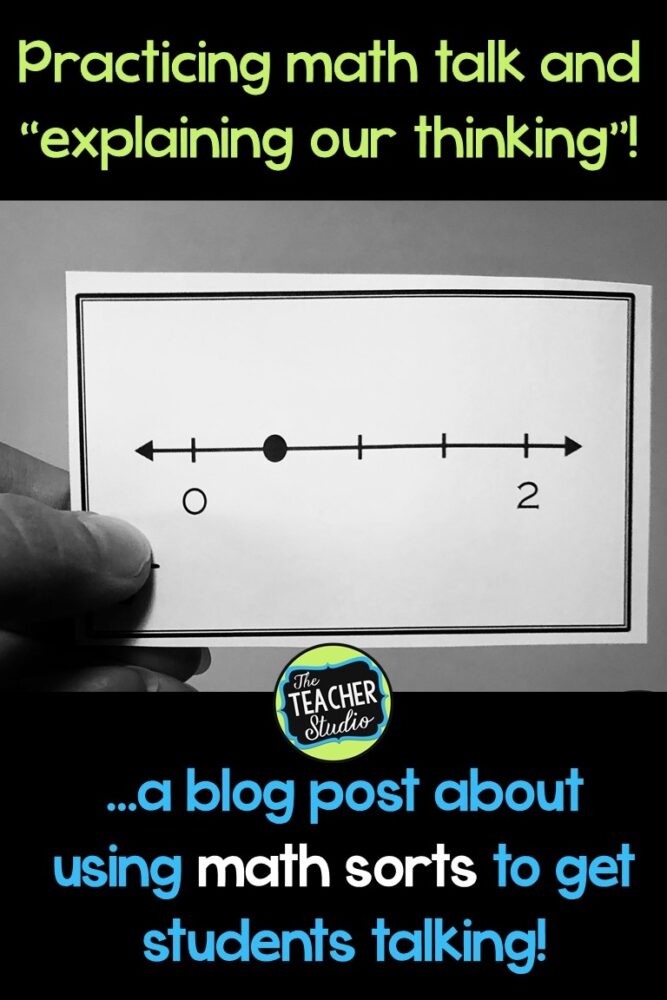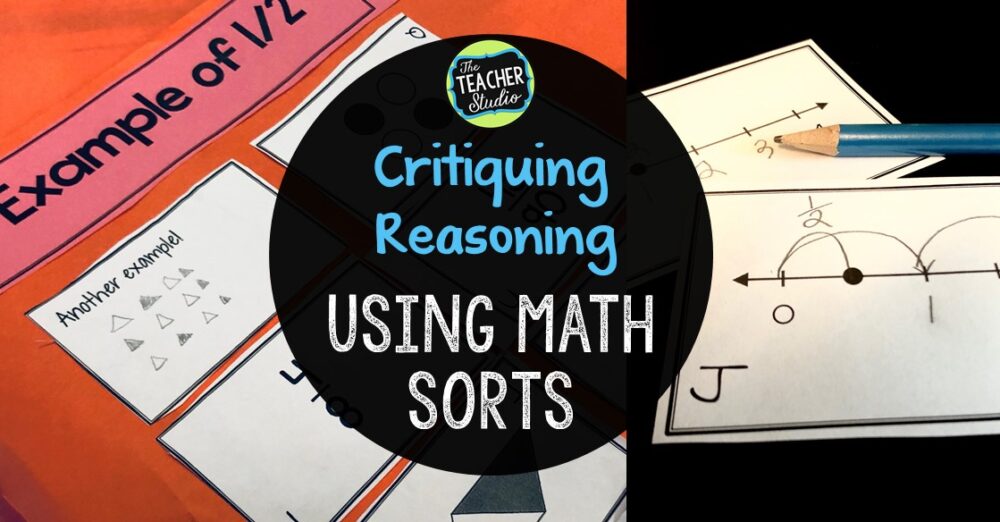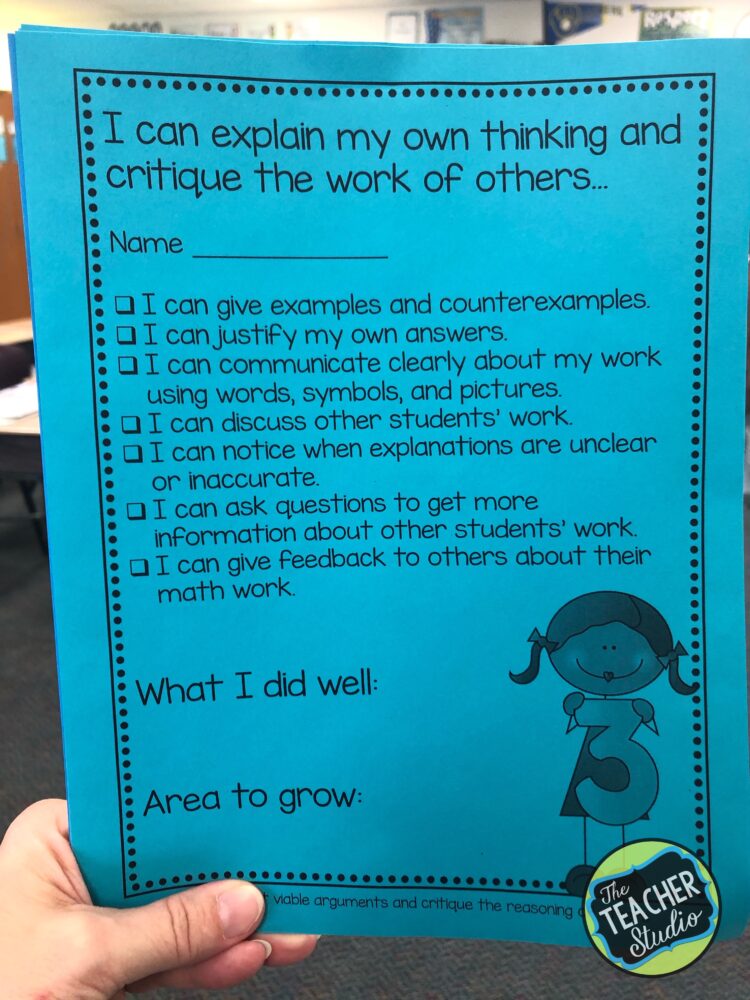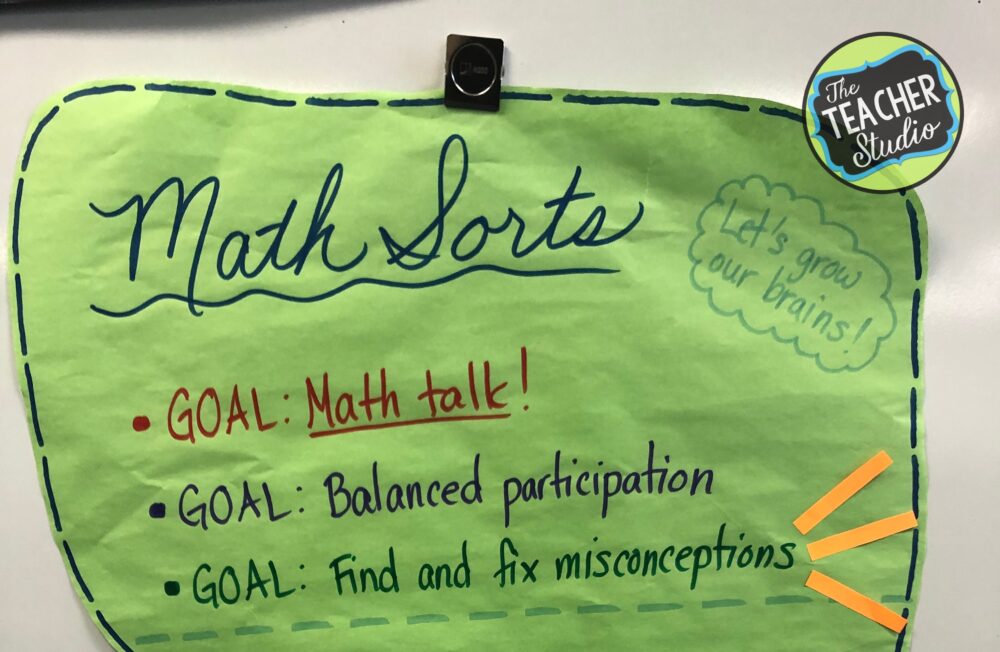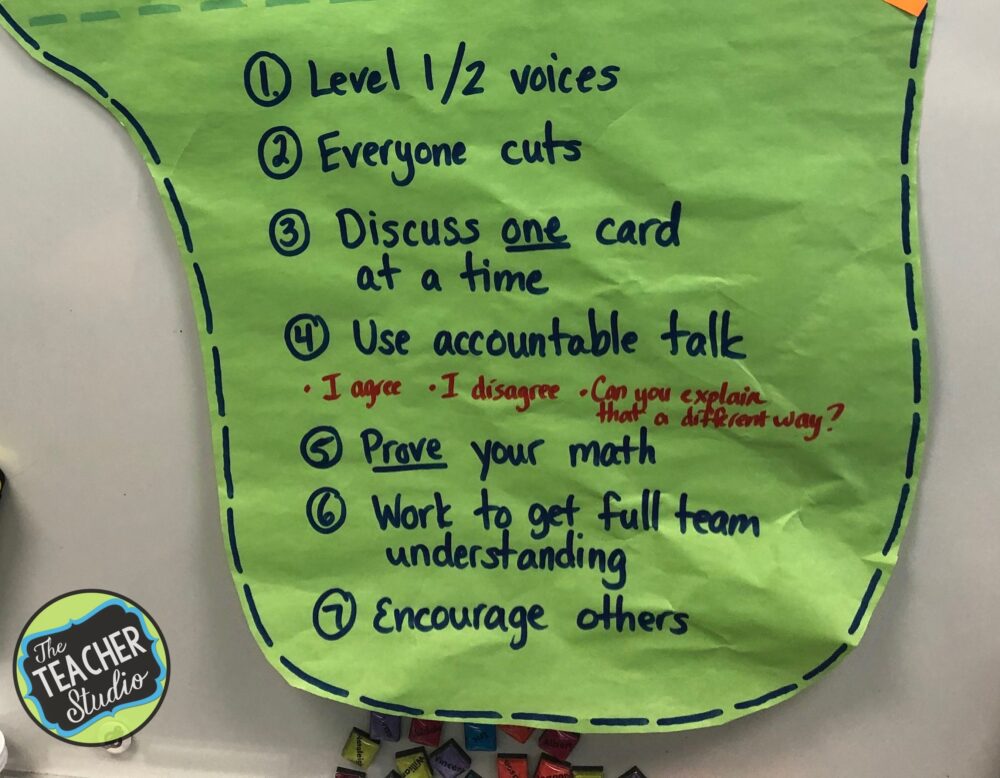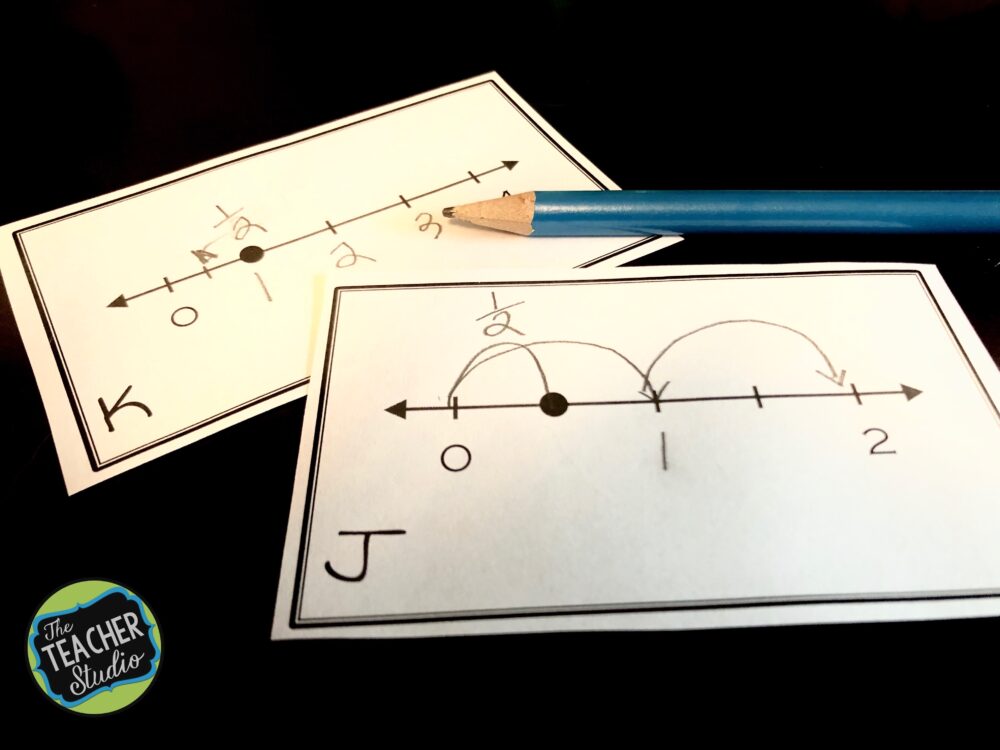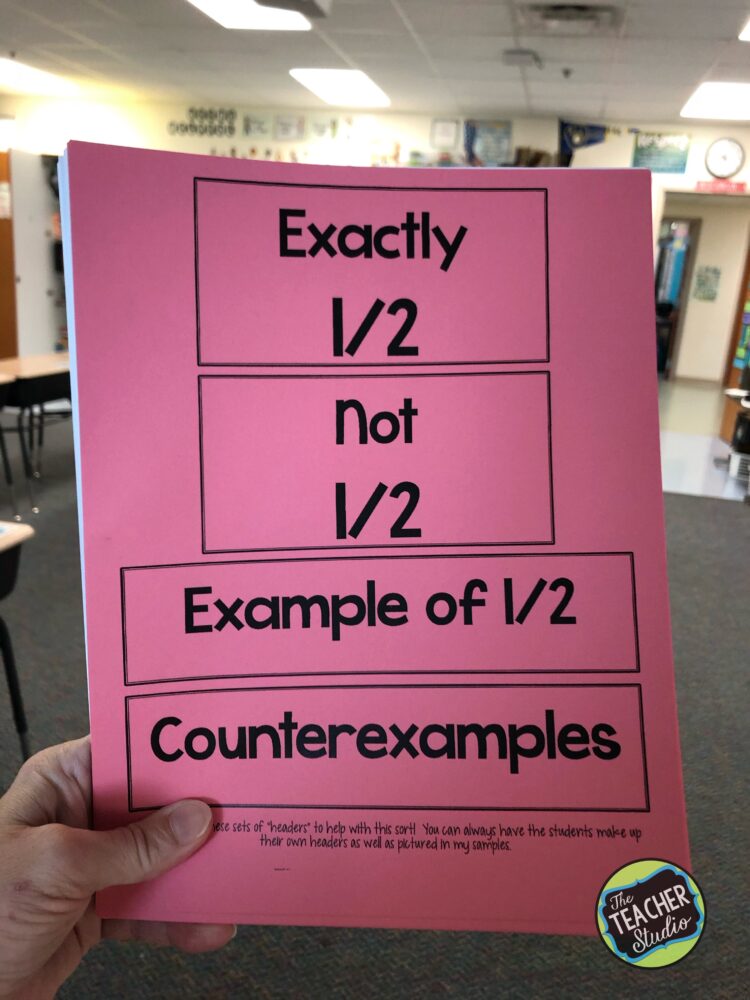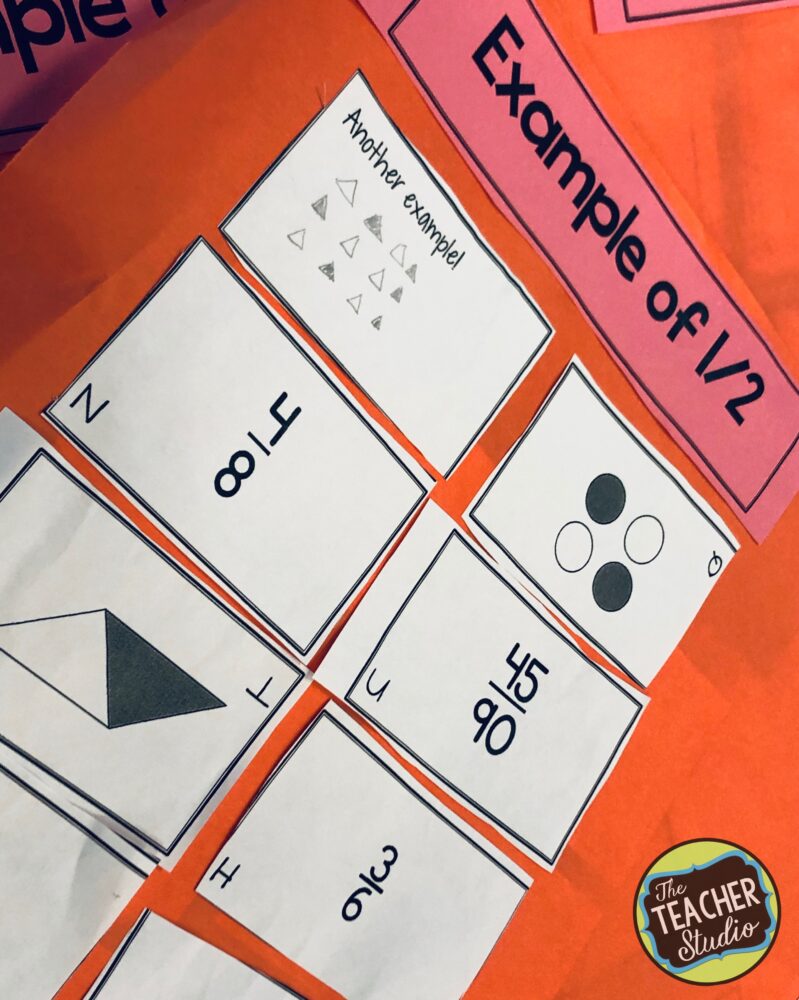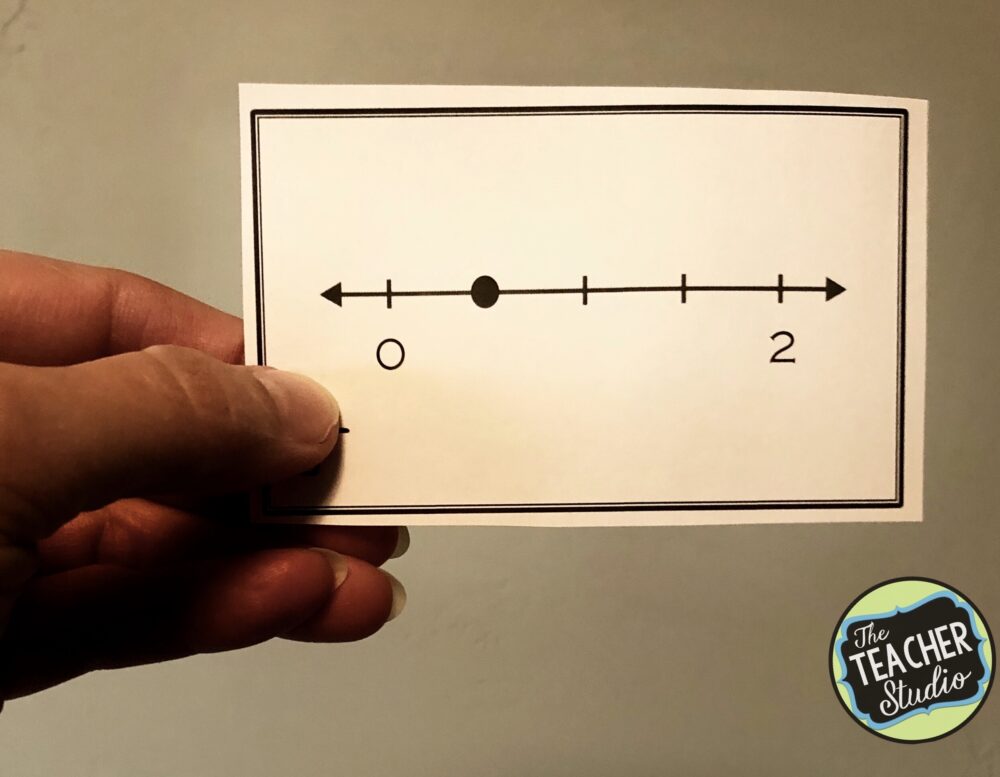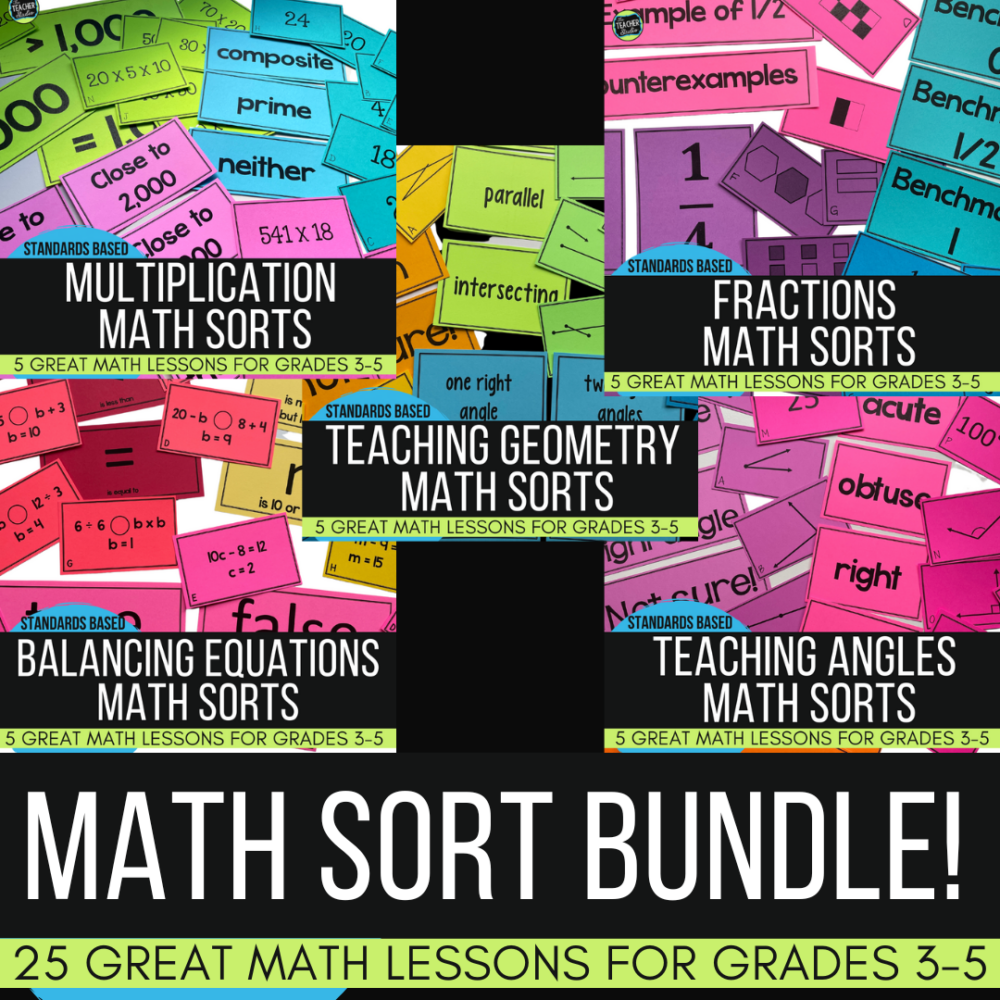
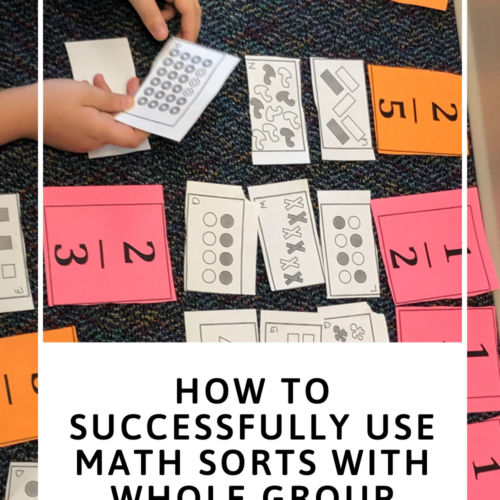
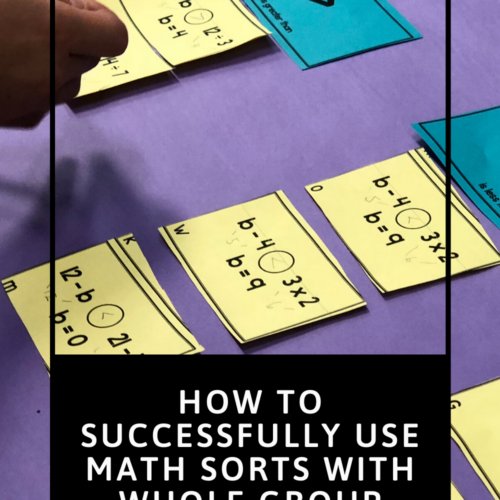
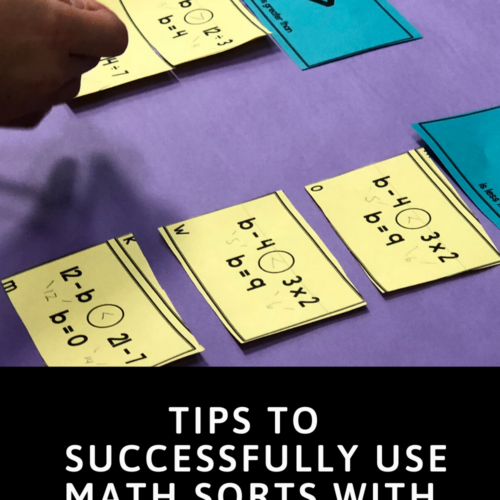

The Standards for Mathematical Practice should form the foundation of every math “content” lesson, but so often textbooks don’t do a good job helping teachers know how to make this happen. Check out this lesson idea that immerses students in the standard of “Construct viable arguments and critique the reasoning of others”.
See what you think–and imagine how much practice the students got in a 40 minute, low prep, whole-class math sorts lesson! Not only will your class be engaged and learning–but your administrator will be wow’ed by all the math thinking that goes on!
For this lesson, the math CONTENT was a very basic fraction sort–identifying if different representations of fractions were equal to 1/2 or not. The goals for the math practice standards were more complex. Here’s what I did!
Explicitly Teaching Expectations
To make sure students understand WHAT my focus standard is and WHY we are practicing, I always show my students a “kid friendly” poster that helps break the standard up into more specific, measurable concepts. (I actually have done this for ALL eight math practice standards because I want to be able to explicitly teach them and use terms and ideas that my students understand.) You can click the image or RIGHT HERE to see this resource in more detail.
For this lesson, I wanted to accomplish two things:
- I wanted to explicitly teach about how to do one of my “math sorts”. I use these sorts ALL YEAR so I want to make sure we learn the procedure from day 1.
- Students need to understand the goals of doing math sorts and how they help us practice math talk.
Getting Started with Math Sorts
The first thing I did was to show students the top half of this anchor chart. We have been working on these things all year, but I wanted them to really see how much I valued them for this lesson. We reviewed how talking about math (with precise language) actually helps US understand better and can help our team. Also, we have been working hard at balancing “power” in our groups, and I wanted students to brainstorm ideas for getting everyone involved. Finally, I wanted students to know that math sorts can help us find misconceptions we have in math and work together to clear them up. #sorryaboutwrinklyposter
Math Sorts Procedures
After we established our purpose, it was time to talk about procedures. In order to make math sorts productive and focused, I like to lay it ALL out there! Most of these are pretty self-explanatory, but I want to explain a few.
First, we know that keeping noise level productive is essential…students need to be able to communicate and the volume needs to match. I also make it clear that EVERYONE helps cut the sort cards and everyone participates in the sorting. Number 3 on the list is “Discuss one card of the time.” This is key.
When the students (and I usually have students work in trios) have finished cutting, they have a pile of 24 cards. Students’ natural reaction is to start grabbing and sorting! By having students turn the cards over and discuss one card at a time, it slows the process down. Rather than having one student take charge while others sit back, it forces the math discussion and more balanced participation.
Similarly, I remind students about the kind of sentence starters we can use when talking about math. Being able to agree, disagree, and ask for clarification are critical. In fact, “prove your math” is a phrase we use a lot. Whether students prove their ideas orally or even by writing on their cards, the idea of “proof” is big in our class!
Finally, we are working hard on building a classroom community where we are ALL teachers and ALL can work to help improve understanding. That’s where the last two items on the list come into play. Math sorts in my room are not a race to the finish. They are not an “I got it right” act activity. The goal is TEAM understanding–and that takes explicit teaching.
Writing directly on the cards is a GREAT way for students to prove their thinking!
Introducing New Math Vocabulary
As the year has unfolded, I have worked hard to build my students’ math vocabulary. We have talked about precision. We have talked about stamina. Using words like “perseverance” and “fluency” and “computation” helps students better use precise math talk when writing and speaking about math.
Today, I wanted to introduce a new word–“counterexample”. This sort has two sets of headings included as shown below. The top sort asks students to sort into groups that are exactly 1/2 and “not 1/2”. Because I think vocabulary work is essential, I chose to use the alternative headers that include the word “counterexample”. As a class, we worked hard to come with all sorts of real world examples of counterexamples to try to cement that into their minds. As the lesson unfolded, I stressed using our new math word whenever possible.
Teaching the Lesson
For those of you unfamiliar with how I do math sorts, know that I have plenty of information in different posts over the past few years. A great starting point would be to CLICK HERE and find some additional teaching tips. To let you know how the lesson unfolded this time, I’ll summarize it below.
- We reviewed the anchor chart and expectations as explained above.
- Students joined their trios and quickly cut their sort cards.
- After the students cut out the headers and made a stack of their cards, the sorting began!
- While the groups sorted, I circulated and listened, watched for misconceptions, and asked questions.
- As groups finished, they created their own cards using the blank cards included with their sort.
- After the groups sorted, I overheard a conversation about a card that I thought was worth sharing with the class.
- We came together as a class to have the discussion, then I sent the groups back to “proofread” their work.
- After a few minutes, I gave the students small sticky note “flags” to use during a gallery walk.
- Students spent 3 minutes walking to other groups and putting flags on any card placement they questioned.
- Groups returned to their own work and had discussions about their flags and made the decision to keep the card or move the card.
- I asked groups to bring up any flagged cards for us to put under the document camera to discuss.
- We had a debate about the card because the class was pretty evenly divided on where they thought it should go. Check out the picture below and see if you can imagine the discussion that unfolded.
The Key Misconception Uncovered During Our Gallery Walk
So here is the card that prompted our discussion. I think you can imagine some of the arguments made! One of my favorite things to do when we encounter a misconception (and my math sorts are DELIBERATELY full of cards like this) is to hold a debate. It goes something like this.
- I present the card under the document camera and ask the question. “Is this an example of 1/2 or a counterexample?”
- Students who pick “example” sit on one side of the room and the students who pick “counterexample” sit on the other.
- Sides take turns using clear math talk to defend their position.
- At any point, students can move to the other side if they hear evidence that is compelling.
- Students can come up to the screen and point, they can draw on the board, or use any other method to prove their point.
- By the time we are finished, we have true team understanding–and lots of math talk practice!
So…I hope this gives you a little taste of what a math sort could look like in YOUR classroom! In fact–I challenge you to invite your administration in to watch the learning unfold!
If you want to see more, just CLICK HERE or the image below to see my entire set of math sorts!
Want to give this a try on your own–try this free algebraic thinking sort!
Rather pin this for later? Here you go!
